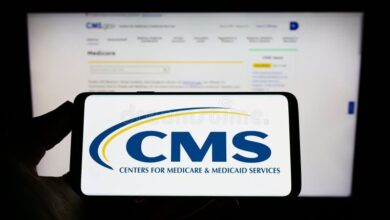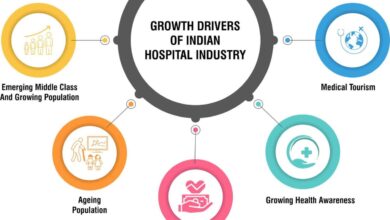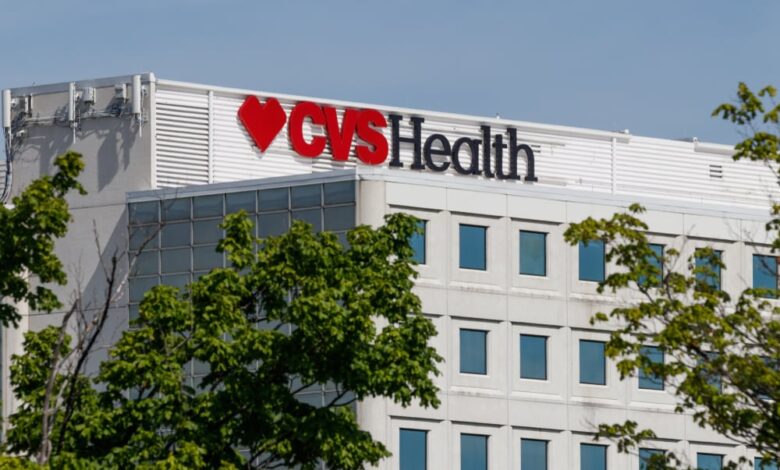
CVS Oak Street Health Acquisition Talks
CVS Oak Street Health acquisition talks are heating up, and this potential merger is shaping up to be a major player in the healthcare landscape. Will this union revolutionize value-based primary care, or will it face insurmountable hurdles? This blog post dives into the strategic rationale behind the deal, examining the potential benefits and risks for both CVS and Oak Street Health, as well as the broader implications for patients and the healthcare industry.
We’ll explore the financial aspects, regulatory challenges, and competitive dynamics at play. From analyzing the strengths and weaknesses of each company to speculating on the future of value-based care, we’ll unpack this complex situation in a clear and accessible way. Get ready to unravel the intricacies of this significant healthcare event!
CVS Health’s Strategic Rationale
CVS Health’s acquisition of Oak Street Health represents a significant strategic move to bolster its presence in the rapidly evolving value-based care landscape. This isn’t simply about adding another healthcare provider to their portfolio; it’s about integrating a proven model of primary care delivery that aligns perfectly with CVS’s existing strengths and long-term goals of becoming a more holistic healthcare provider.The primary motivation behind this acquisition lies in the potential for substantial synergies.
Oak Street Health’s focus on value-based care, where reimbursement is tied to patient outcomes rather than the volume of services provided, directly complements CVS’s existing businesses, including its pharmacy network, MinuteClinics, and health insurance arm, Aetna. By combining these resources, CVS can offer a more integrated and coordinated care experience, potentially leading to improved patient health outcomes and reduced healthcare costs.
The acquisition allows CVS to expand its reach into a growing segment of the market – older adults – who require more comprehensive and coordinated care.
Synergies Between CVS and Oak Street Health
The integration of Oak Street Health’s value-based primary care model with CVS’s existing infrastructure offers several key advantages. Oak Street’s focus on managing chronic conditions, such as diabetes and heart disease, aligns perfectly with CVS’s pharmacy and MinuteClinic services. This allows for seamless medication management, preventative care, and chronic disease monitoring, all within a coordinated care system. Furthermore, Aetna’s insurance network provides a ready-made patient referral system, streamlining access to Oak Street’s primary care services.
The combination could potentially lead to increased patient engagement, better health outcomes, and reduced overall healthcare expenditures for both CVS and its insurance customers.
Comparison with Other Healthcare Mergers and Acquisitions
This acquisition mirrors a broader trend in the healthcare industry towards consolidation and integration. Similar mergers and acquisitions, such as UnitedHealth Group’s acquisitions of primary care providers, demonstrate a strategic shift towards value-based care and the creation of integrated healthcare delivery systems. However, the CVS-Oak Street deal is unique in its combination of pharmacy, retail clinics, insurance, and a large-scale value-based primary care provider.
This comprehensive approach distinguishes it from many other mergers focused on specific aspects of healthcare delivery. It’s a bolder, more holistic strategy aiming for a vertically integrated healthcare model.
Comparative Strengths and Weaknesses Before Merger
| Feature | CVS Health (Before Merger) | Oak Street Health (Before Merger) |
|---|---|---|
| Strengths | Extensive pharmacy network, large retail presence (MinuteClinics), established insurance arm (Aetna), strong brand recognition, significant financial resources. | Proven value-based primary care model, strong focus on managing chronic conditions in older adults, experienced management team, growing patient base. |
| Weaknesses | Limited experience in value-based primary care at scale, potential integration challenges with acquired companies, dependence on fee-for-service revenue streams in some areas. | Relatively smaller scale compared to CVS, geographic limitations, potential challenges in scaling its model nationally. |
Oak Street Health’s Perspective

Source: primarypartnercare.com
For Oak Street Health, the CVS acquisition presents a compelling opportunity to significantly expand its reach and impact on the senior healthcare market. While maintaining its focus on value-based care, the deal offers access to CVS’s extensive network and resources, potentially accelerating growth and improving operational efficiency. However, navigating the integration process and ensuring the preservation of its unique patient-centric model will be crucial for long-term success.Oak Street Health’s existing patient base stands to benefit from enhanced access to a wider range of healthcare services.
The integration with CVS’s pharmacy network, MinuteClinics, and other healthcare offerings creates a more comprehensive and convenient care ecosystem for its patients. This could lead to improved health outcomes and increased patient satisfaction. The acquisition also offers potential for operational improvements, streamlining administrative tasks and leveraging CVS’s scale to negotiate better rates with suppliers.
Impact on Oak Street Health’s Operational Model
The acquisition could significantly reshape Oak Street Health’s operational model. While the specifics remain to be seen, we can expect a period of integration and adjustment. CVS’s robust infrastructure and technology systems could be leveraged to improve Oak Street Health’s efficiency in areas such as scheduling, billing, and data analytics. However, it’s crucial that the integration process is carefully managed to avoid disruptions to patient care and maintain the quality of the personalized, holistic approach that defines Oak Street Health’s current model.
A successful integration will likely involve a delicate balance between leveraging CVS’s resources and preserving Oak Street Health’s unique brand identity and operational strengths. For example, the acquisition could lead to the implementation of CVS’s advanced data analytics tools to improve patient risk stratification and proactive care management, while simultaneously retaining Oak Street Health’s emphasis on building strong doctor-patient relationships.
Potential Risks and Challenges
The acquisition also presents potential risks. Culture clashes between the two organizations are a common challenge in mergers and acquisitions. Maintaining the patient-centric culture that Oak Street Health has cultivated will be vital to avoid alienating existing patients and staff. Furthermore, ensuring that the integration process doesn’t lead to a dilution of the quality of care provided is crucial.
There’s also the risk of operational disruptions during the transition period. A poorly managed integration could lead to temporary inefficiencies and even a decline in patient satisfaction. Finally, there’s the potential for regulatory scrutiny, requiring a thorough and transparent process to satisfy antitrust concerns. Similar acquisitions in the healthcare sector have faced such challenges, requiring significant resources and time to address.
Future Growth Scenarios Under CVS Ownership
Under CVS’s ownership, Oak Street Health’s future growth could follow several paths. One scenario involves leveraging CVS’s extensive network to rapidly expand into new geographic markets, reaching a broader patient population. This could involve establishing new Oak Street Health centers within existing CVS locations or utilizing CVS’s infrastructure to support expansion into underserved areas. Another scenario focuses on deepening the integration of services, offering a more comprehensive suite of care options through coordinated care pathways that leverage both Oak Street Health’s primary care expertise and CVS’s extensive network of pharmacies, MinuteClinics, and specialty care providers.
This integrated approach could lead to better health outcomes and potentially attract new patients seeking comprehensive, convenient care. A third scenario involves leveraging CVS’s data analytics capabilities to refine Oak Street Health’s value-based care models, improving efficiency and reducing costs. This could involve using data-driven insights to identify high-risk patients, optimize care pathways, and improve the effectiveness of preventative care initiatives.
The ultimate success will depend on how effectively CVS integrates Oak Street Health while preserving its unique strengths and patient-centric approach.
Market and Competitive Landscape
The CVS Health acquisition of Oak Street Health significantly alters the landscape of value-based primary care. This rapidly growing sector focuses on delivering high-quality, cost-effective care to a population often underserved by traditional fee-for-service models. Understanding the market dynamics and competitive pressures is crucial to assessing the long-term success of this merger.The value-based primary care market is experiencing explosive growth, driven by increasing healthcare costs, a shifting reimbursement model, and a greater emphasis on preventative care.
CVS’s potential acquisition of Oak Street Health has everyone talking about the future of healthcare delivery. This move, if finalized, could significantly impact how primary care is accessed and managed. It’s interesting to consider this in light of advancements like those detailed in this article about nuance integrates generative ai scribe epic ehrs , which shows how AI is streamlining clinical documentation.
Ultimately, both developments point towards a more technologically advanced and potentially more efficient healthcare system, which could influence the success of the CVS-Oak Street merger.
This growth attracts both established players and new entrants, leading to a dynamic and competitive environment. The market is characterized by a diverse range of providers, including large national healthcare systems, smaller regional networks, and independent physician practices. Each has a different approach to value-based care, ranging from comprehensive primary care services to specialized programs focused on specific chronic conditions.
The competition is intense, with providers vying for patients and contracts with payers.
Competitive Landscape Analysis
Key competitors to the combined CVS Health and Oak Street Health entity include other large integrated healthcare systems such as Kaiser Permanente, which offers a comprehensive, integrated model of care; and large national physician groups like Optum, which is aggressively expanding its value-based care offerings. Regional players and smaller, specialized value-based care providers also pose a competitive threat.
The combined entity will face competition from these organizations in attracting patients, securing contracts with payers, and recruiting and retaining high-quality physicians and other healthcare professionals. Their competitive advantage will likely lie in their scale, integrated network, and ability to leverage CVS’s extensive retail presence and pharmacy network.
Impact on Healthcare Costs and Access
The acquisition’s impact on healthcare costs and access is complex and multifaceted. Proponents argue that the combined entity’s scale and integrated model will lead to improved care coordination, reduced hospital readmissions, and better management of chronic conditions, ultimately lowering healthcare costs. They point to Oak Street’s success in managing chronic conditions in underserved communities as evidence of their cost-saving potential.
However, critics raise concerns about potential market consolidation and reduced competition, which could lead to higher prices. The acquisition’s impact on access will depend on factors such as the combined entity’s investment in expanding services to underserved areas and its ability to attract and retain patients.
Hypothetical Scenario: Impact on a Diabetic Patient Population
Consider a hypothetical scenario focusing on a population of elderly, low-income patients with diabetes residing in a specific underserved urban area currently receiving care from fragmented sources. Prior to the acquisition, these patients may have experienced challenges accessing coordinated care, leading to suboptimal management of their diabetes. High rates of emergency room visits and hospitalizations resulted in high costs.
Post-acquisition, the integrated model of CVS Health and Oak Street Health could offer these patients comprehensive primary care, including diabetes management programs, access to affordable medications through CVS pharmacies, and telehealth services. This integrated approach could lead to better control of blood sugar levels, fewer hospitalizations, and lower overall healthcare costs for these patients and the healthcare system. This improved coordination and access could be measured by tracking metrics such as HbA1c levels, emergency room visits, and hospital readmissions.
A reduction in these metrics would indicate a positive impact on both cost and access. Furthermore, the increased access to preventative care might prevent more severe complications of diabetes, leading to a higher quality of life for these patients.
Regulatory and Legal Considerations
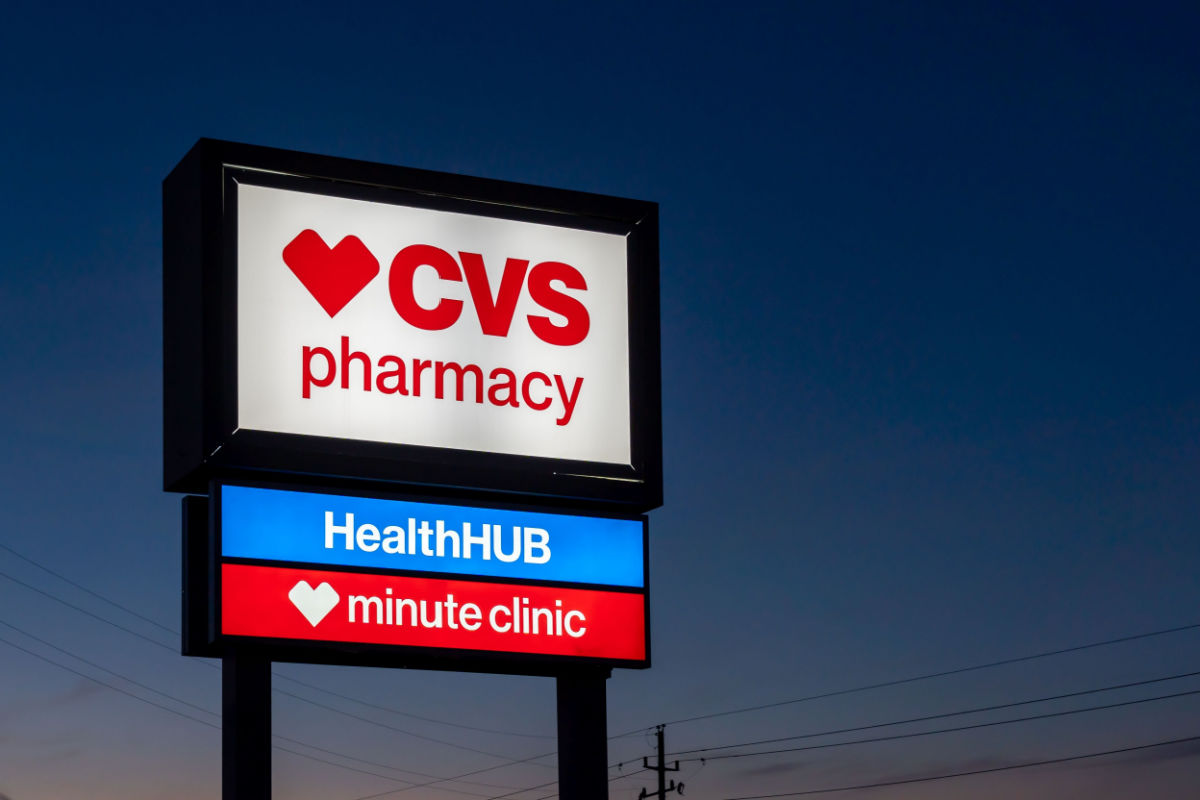
Source: com.br
The CVS Health acquisition of Oak Street Health faces a complex regulatory landscape, requiring careful navigation to ensure a smooth and successful completion. The process involves multiple agencies and potential legal challenges, making a thorough understanding of these considerations crucial. This section details the anticipated hurdles and potential timelines involved.
Antitrust Review Process
The primary regulatory hurdle will be the antitrust review. Both the Federal Trade Commission (FTC) and the Department of Justice (DOJ) will scrutinize the merger to assess its potential impact on competition within the healthcare market, specifically focusing on the managed care and primary care sectors. The agencies will investigate whether the merger would lead to reduced competition, higher prices, or less innovation for consumers.
The review will involve analyzing market share data, examining the competitive landscape, and evaluating the potential for CVS Health to leverage its extensive network and resources to stifle competition from other providers. A similar merger review, for example, was faced by UnitedHealth Group’s acquisition of Change Healthcare, which faced intense scrutiny and ultimately resulted in the deal being abandoned.
The length and outcome of this process will be heavily dependent on the specifics of the deal and the evidence presented to the regulatory bodies.
State-Level Regulatory Approvals
Beyond the federal level, the acquisition will also require approvals from various state regulatory bodies. These approvals may vary in their requirements and timelines, potentially creating a staggered process across different states. State Attorneys General may also conduct their own independent reviews, adding to the complexity. The specifics will depend on the operating licenses and regulatory frameworks in the states where Oak Street Health operates.
This fragmented approach could introduce delays and potentially lead to challenges if individual states raise concerns.
Potential Legal Challenges, Cvs oak street health acquisition talks
While the antitrust review is the most significant legal hurdle, other potential challenges exist. Competitors or consumer advocacy groups could file lawsuits alleging anti-competitive practices or violations of antitrust laws. The likelihood of success for such lawsuits will depend on the strength of the evidence presented and the interpretation of antitrust law by the courts. Historically, successful challenges to large healthcare mergers have been relatively rare, but the potential always exists, especially given the increasing focus on healthcare competition and affordability.
A successful challenge could lead to the deal being blocked or requiring significant divestitures.
Timeline for Regulatory Review
Predicting the exact timeline for regulatory review is difficult, but a reasonable estimate might range from 9 to 18 months. This timeframe encompasses the FTC/DOJ investigation, state-level reviews, and potential legal challenges. The process could be expedited if the parties proactively address potential concerns, but delays are also possible due to unforeseen complications or protracted legal battles. The experience of other large healthcare mergers, such as the aforementioned UnitedHealth Group/Change Healthcare deal, provides a benchmark for understanding the potential range of timelines and challenges.
Financial Implications and Valuation
The CVS acquisition of Oak Street Health represents a significant financial undertaking, with implications for both companies and the broader healthcare landscape. Understanding the financial terms, potential returns, and comparative valuations is crucial to assessing the deal’s success. This section delves into the key financial aspects of this merger.
Acquisition Price and Payment Method
CVS agreed to acquire Oak Street Health for approximately $10.7 billion in cash, representing a price of $39 per share. This all-cash transaction eliminates the complexities and potential dilution associated with stock-based acquisitions. The significant cash outlay demonstrates CVS’s commitment to expanding its presence in the value-based primary care market. The speed of the deal’s closure also suggests a strong belief in the synergy potential between the two companies.
This pricing represents a premium over Oak Street’s pre-announcement trading price, reflecting the market’s expectation of significant future growth within the value-based care model.
Impact on CVS’s Financial Performance
The acquisition is expected to positively impact CVS’s financial performance in several ways. First, Oak Street’s existing network of primary care centers will significantly expand CVS’s reach and market share in value-based care, a rapidly growing segment of the healthcare industry. Second, the integration of Oak Street’s patient base and operational expertise will likely lead to increased revenue and improved profitability.
Third, synergies between CVS’s existing pharmacy and health services businesses and Oak Street’s primary care network should generate cost savings and operational efficiencies. However, the short-term impact may include increased expenses related to integration and restructuring. Long-term, however, the expectation is for significant returns on investment. Successful integration will be key to realizing these predicted benefits.
Valuation Compared to Similar Companies
Valuing Oak Street Health requires comparing it to similar companies in the value-based primary care and managed care sectors. Direct comparisons are challenging due to the unique aspects of Oak Street’s model. However, metrics like revenue multiples, EBITDA multiples, and price-to-sales ratios can be used to benchmark the valuation against competitors such as Cano Health, Agilon Health, and other publicly traded healthcare companies focused on value-based care.
The final valuation likely reflects the market’s assessment of Oak Street’s growth potential and the strategic value it brings to CVS. A thorough analysis of comparable company multiples, adjusted for differences in size, growth rates, and business models, would provide a more precise valuation benchmark.
Hypothetical Financial Model: Return on Investment
Predicting the precise ROI is challenging, but a hypothetical model can illustrate the potential. The following table presents a simplified example, assuming certain growth rates and synergies. Note that these figures are for illustrative purposes only and should not be considered financial advice.
So, the CVS and Oak Street Health acquisition talks are heating up, and it got me thinking about the complexities of healthcare negotiations. It’s fascinating to compare this to the recent breakthroughs, like the new york nurse strike deal reached Mount Sinai Montefiore , which highlights the power of collective bargaining in securing better healthcare conditions. Ultimately, both situations underscore the need for strong advocacy within the healthcare system, whether it’s through mergers or direct action.
| Year | Revenue Growth (Oak Street) | Synergy Savings | Net Income (Oak Street) | Return on Investment (ROI) |
|---|---|---|---|---|
| 1 | 15% | $50 million | $150 million | 5% |
| 2 | 12% | $100 million | $250 million | 10% |
| 3 | 10% | $150 million | $400 million | 15% |
| 4 | 8% | $200 million | $600 million | 20% |
Note: This is a simplified model and does not account for all potential risks and uncertainties. Actual results may vary significantly.
Impact on Employees and Patients
The CVS Health acquisition of Oak Street Health presents a complex picture regarding its impact on employees and patients. While the merger promises potential benefits like expanded resources and reach, it also raises concerns about job security, changes in care models, and potential disruptions to patient relationships. Careful consideration of these factors is crucial for a successful integration.The acquisition’s impact on employees will likely vary depending on their roles and locations.
Some employees may find new opportunities within the combined organization, potentially leading to career advancement and enhanced benefits. Others may face redundancy or changes in their job responsibilities, requiring retraining or relocation. The successful integration will depend heavily on transparent communication and a well-planned transition strategy to minimize employee anxiety and disruption. For example, CVS Health could implement comprehensive retraining programs for employees whose roles become obsolete, ensuring a smooth transition to new positions within the company.
They could also offer generous severance packages to those who are let go, mitigating the negative impact on their livelihoods.
Employee Impact
CVS Health’s track record in absorbing acquired companies will play a significant role in determining the overall employee experience. A history of successful integrations, marked by minimal job losses and effective employee retention strategies, will reassure Oak Street Health employees. Conversely, a history of significant layoffs following acquisitions could lead to widespread anxiety and decreased morale. Transparency in communication regarding potential changes, including job security, benefits, and career paths, will be essential in mitigating negative impacts.
The success of this acquisition, in part, will depend on CVS Health’s commitment to its employees, not just as assets, but as integral components of a successful transition. Offering robust support systems, including career counseling and job placement services, can greatly reduce employee uncertainty and stress.
Patient Access to Care
The acquisition’s effect on patient access to care is a key concern. Oak Street Health’s focus on value-based care and its network of primary care clinics in underserved communities could be affected. If CVS Health integrates Oak Street’s clinics into its existing infrastructure, there is potential for expansion of services and access to a wider range of specialists.
However, there’s also a risk that changes in management, insurance networks, or clinic locations could disrupt existing patient-physician relationships and limit access for some patients, particularly those in more remote areas. Maintaining existing patient relationships and ensuring continued access to high-quality, affordable care will be critical for retaining patients and maintaining public trust. For example, CVS Health could invest in expanding telehealth services to ensure patients in remote areas maintain access to care.
They could also ensure continued participation in existing Medicare Advantage plans to minimize disruption for elderly patients.
Changes in Healthcare Services
The integration of Oak Street Health’s model into CVS Health’s broader healthcare ecosystem could lead to significant changes in healthcare services. Oak Street’s focus on value-based care, preventative medicine, and personalized care may be expanded or modified to align with CVS Health’s strategies. This could result in improvements to the quality and efficiency of care, but also the potential for changes in service offerings, such as the introduction of new technologies or the discontinuation of certain programs.
The potential for streamlining administrative processes could improve efficiency and reduce costs, but there is a risk that personalized care might be compromised if the focus shifts to standardized procedures. For instance, the integration could lead to the expansion of telehealth services, increasing accessibility for patients, but it could also lead to a reduction in in-person visits, potentially impacting the patient-physician relationship.
A phased integration with careful monitoring of patient satisfaction and healthcare outcomes is essential to manage this risk.
The CVS and Oak Street Health acquisition talks are fascinating, especially considering the potential impact on data management. A key element to consider is how this integration could leverage advancements like those discussed in this insightful study on widespread digital twins in healthcare: study widespread digital twins healthcare. Ultimately, successful implementation could redefine patient care and streamline processes within the combined CVS-Oak Street system.
Strategies for Mitigating Negative Impacts
Effective communication and transparency are paramount to mitigating negative impacts on both employees and patients. Open dialogue about the acquisition’s implications, including potential job changes, service alterations, and access to care, will help build trust and address concerns proactively. A detailed transition plan outlining specific steps and timelines for integration will provide clarity and reduce uncertainty. Moreover, investing in employee training and retention programs, along with ensuring continued access to high-quality, affordable care for patients, will demonstrate CVS Health’s commitment to its stakeholders.
For example, regular town hall meetings and employee surveys can provide valuable feedback and address employee concerns directly. Similar strategies should be employed to ensure patient voices are heard and concerns are addressed promptly.
Closing Notes: Cvs Oak Street Health Acquisition Talks
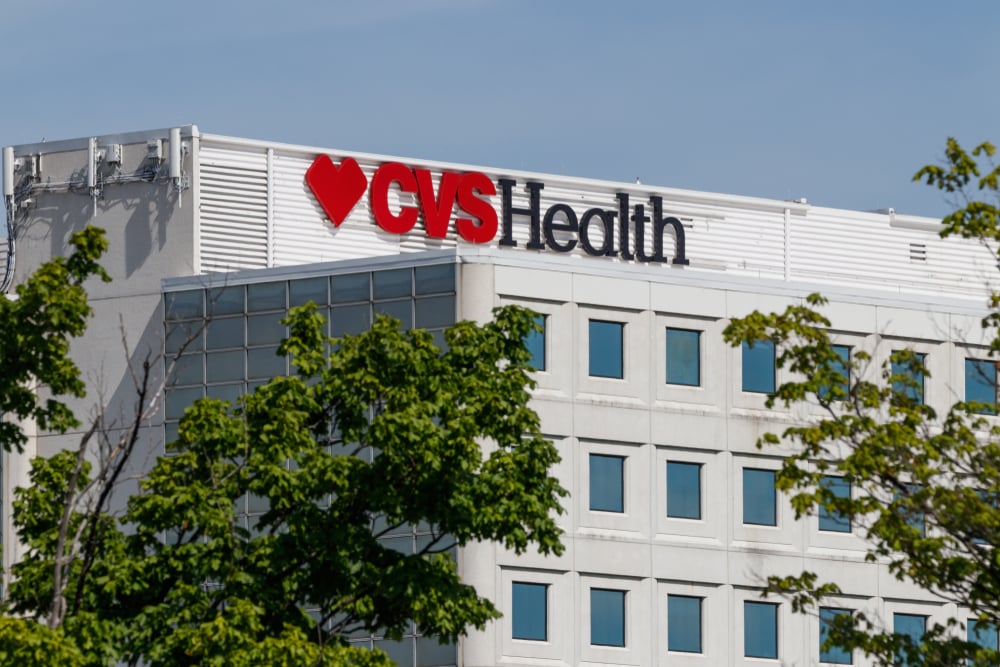
Source: builtinchicago.org
The CVS and Oak Street Health acquisition talks present a fascinating case study in the evolving healthcare market. The potential benefits are significant – increased access to care, improved patient outcomes, and enhanced financial performance – but substantial challenges remain. Regulatory hurdles, antitrust concerns, and the integration of two distinct corporate cultures all pose significant risks. Ultimately, the success of this merger will depend on careful planning, effective execution, and a commitment to putting patients first.
Only time will tell if this ambitious venture achieves its lofty goals.
FAQ Resource
What is value-based primary care?
Value-based primary care focuses on providing high-quality, cost-effective care by rewarding providers for achieving positive patient outcomes, rather than simply the volume of services provided.
What are the potential antitrust concerns?
Regulators will likely scrutinize the merger for potential anti-competitive effects, particularly in markets where both CVS and Oak Street Health have a significant presence. Concerns might center around reduced competition and potential price increases.
How will the acquisition impact patients’ insurance coverage?
The impact on patient insurance coverage will depend on the specifics of the acquisition and any changes to Oak Street Health’s network participation agreements with insurers. More information will be available as the deal progresses.
What are the potential job losses?
While some redundancies are possible during integration, the overall impact on employment is uncertain. Both companies have stated a commitment to minimizing job losses, but some restructuring is likely.
